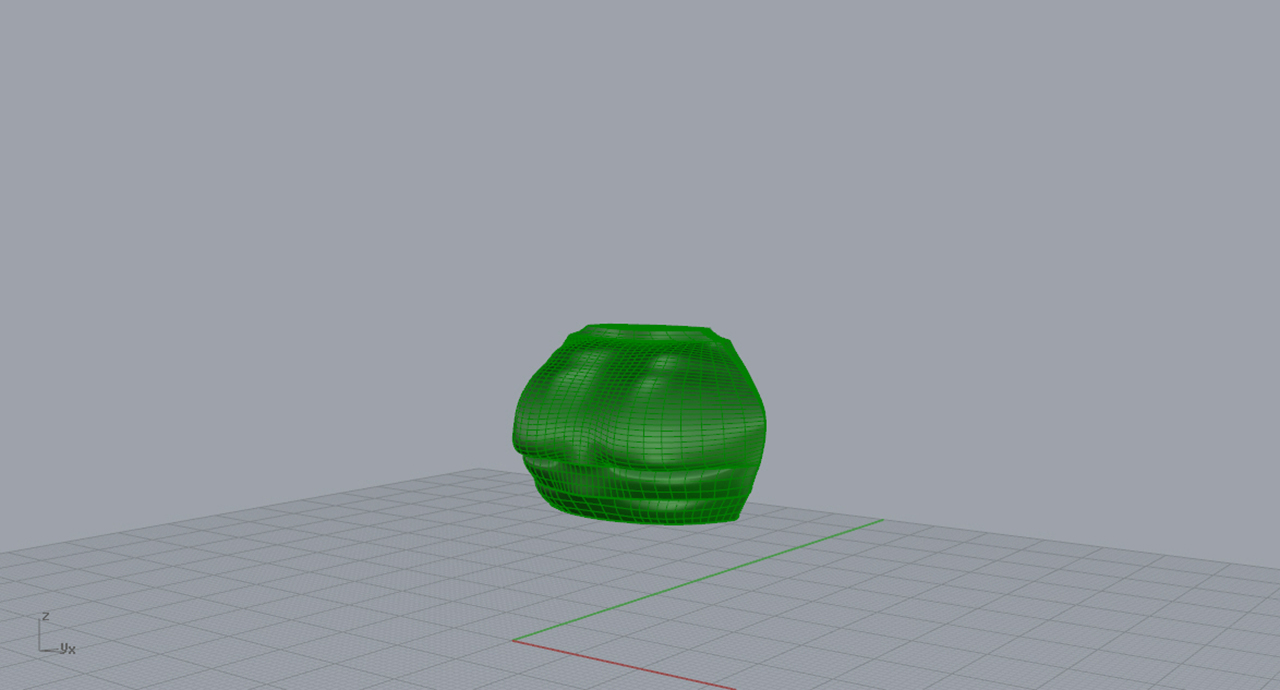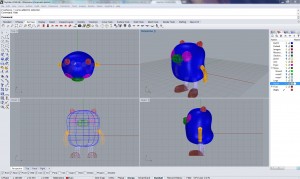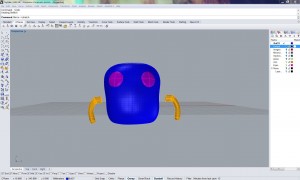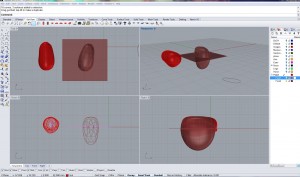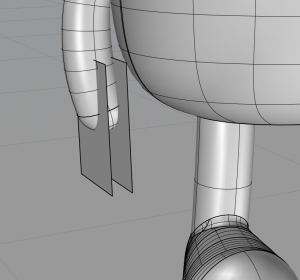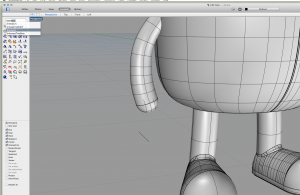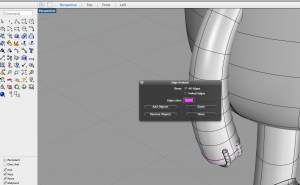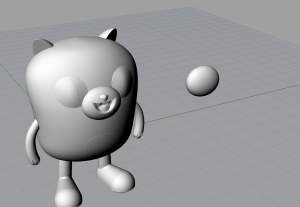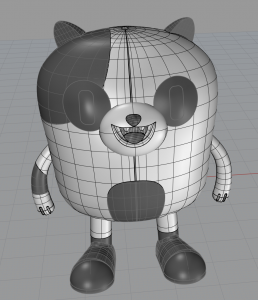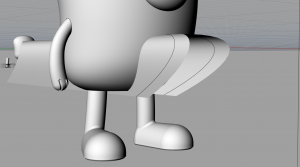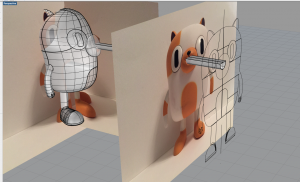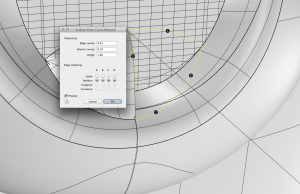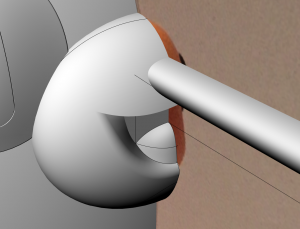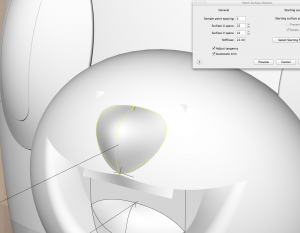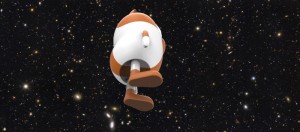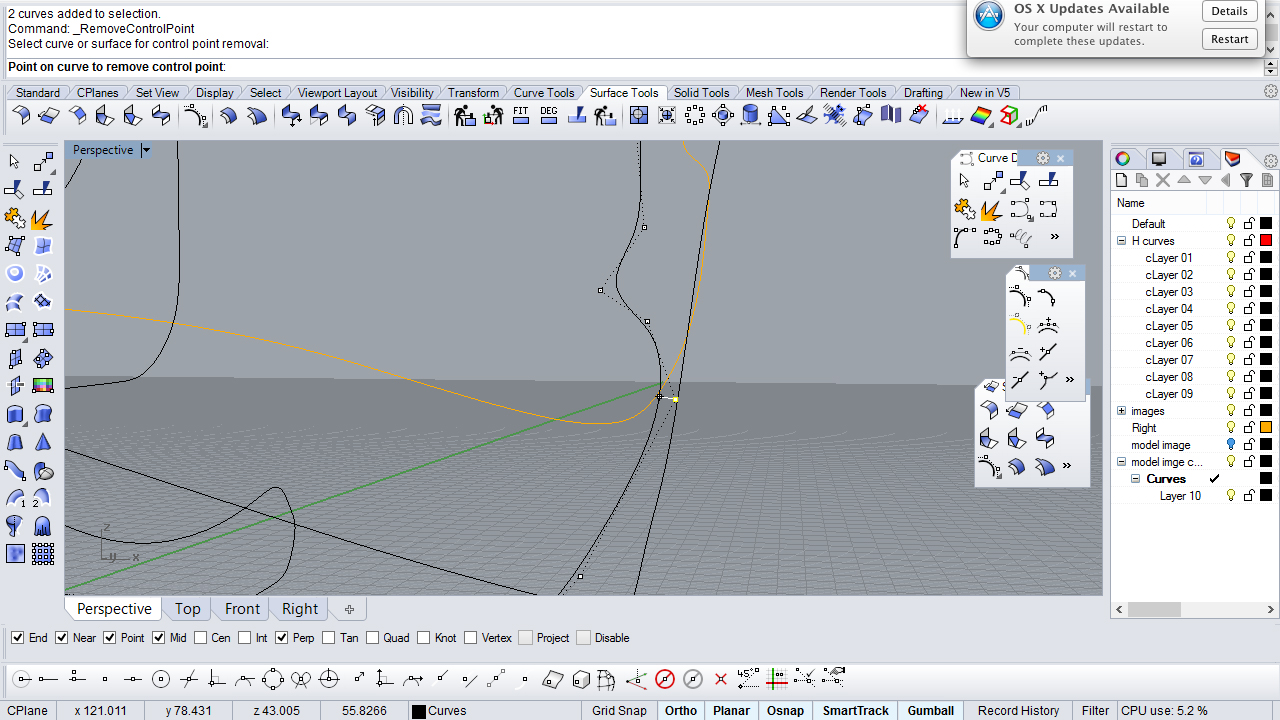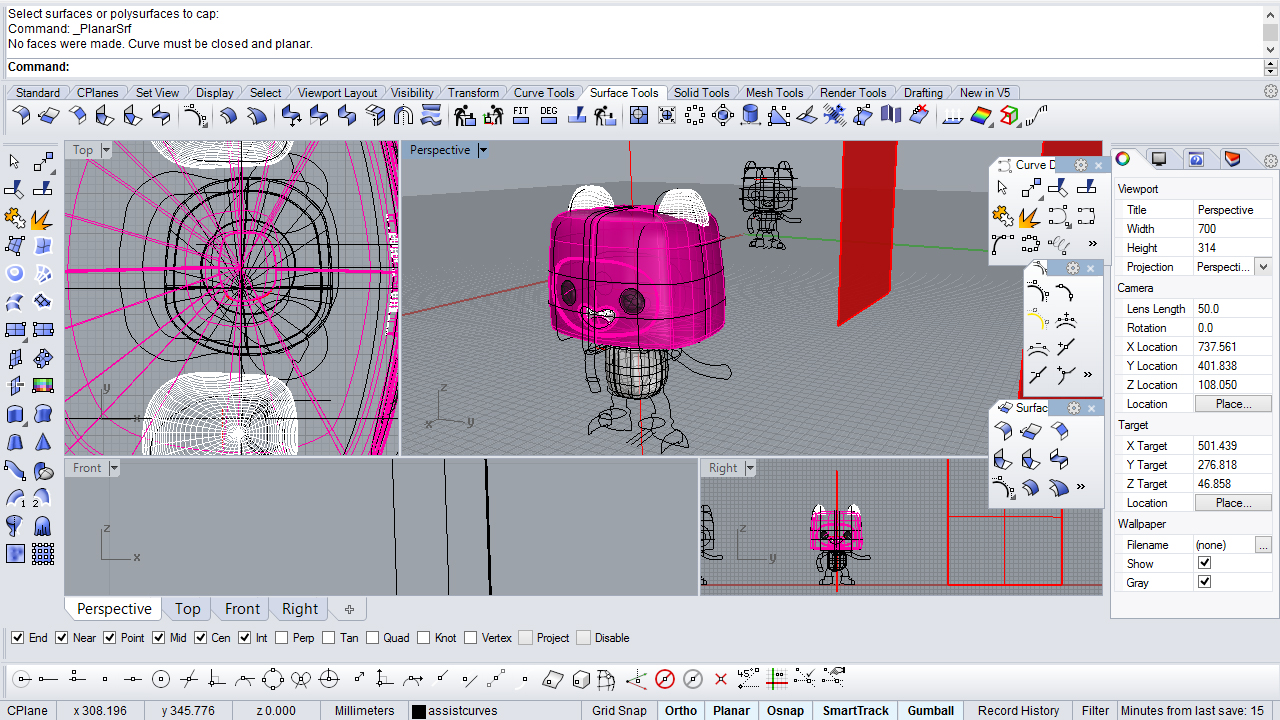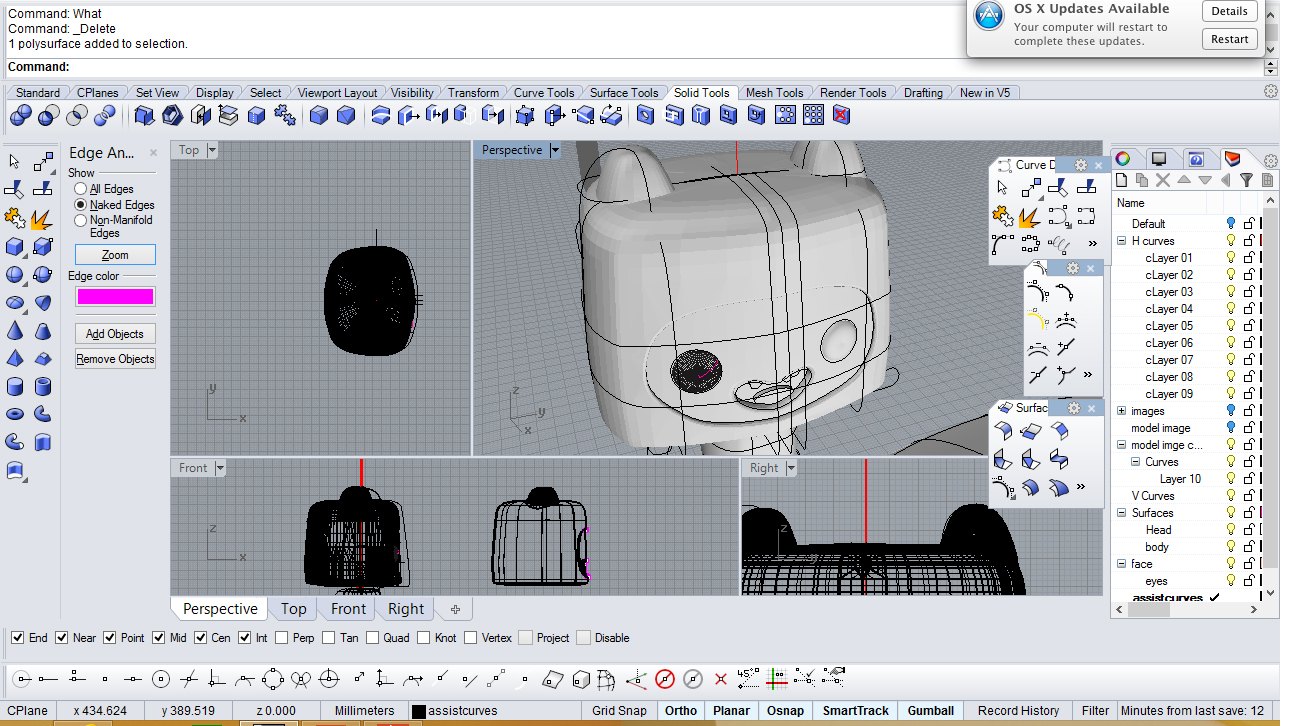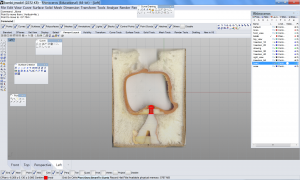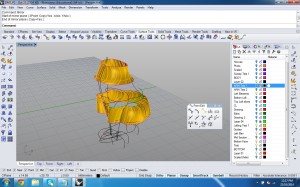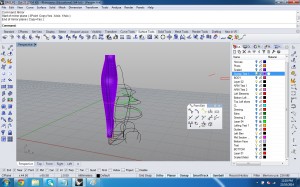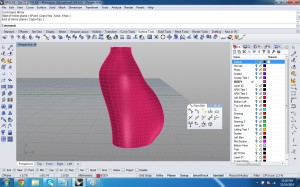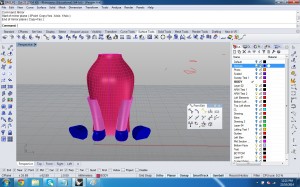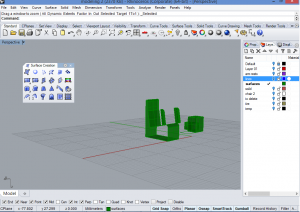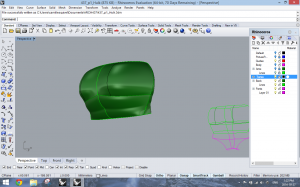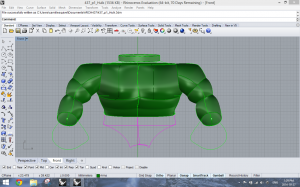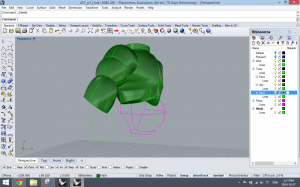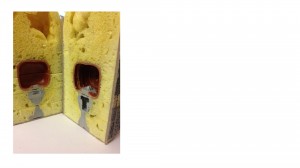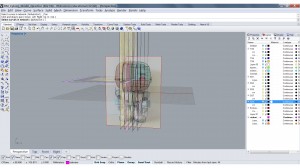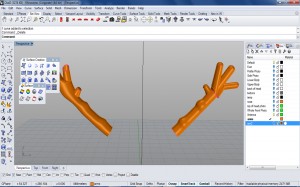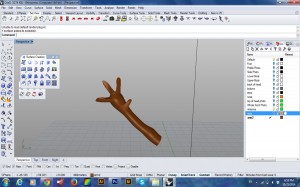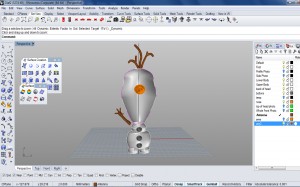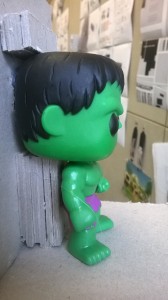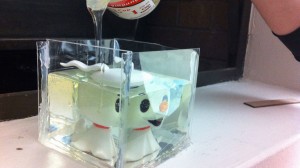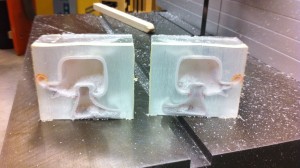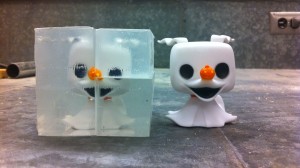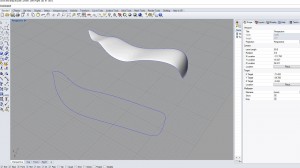For the first two weeks of this project, I spent my time trying many different things to create the “incredible” Hulk’s body. The most difficult part was creating surfaces with muscular definition, as the hulk is very ripped. In the end, I ended up with a Hulk that I wasn’t happy with and a handful of different torsos, legs, arms and heads that I built using different methods. After realizing this approach was not going to work and observing other peoples’ models, I decided I needed to try using techniques that were much simpler. On the bright side, I learned a lot more about how to use rhino by trying all of these different methods.

First attempt at the Hulk. Lots of attempts at the chest!
The arms: The first method I tried was putting spheres together. This was an easy method that definitely did not work. I also tried the command “sweep 2” and “rail revolve” to make the individual arm muscles and then I pulled them together. This looked better, but still wasn’t great.
The solution was using curve network surfaces to create each muscle! This created the best result. Using curve networks also ended up being the solution to create the legs. Yay!
Techniques to building the chest: The first way I tried to build the chest was through lofting vertical lines together. This created a surface that looked “blocky.” Then I thought it might work better if I lofted together horizontal lines. I was wrong. Then I tried using “rail revolve” to create a basic shape and then played with the control points. Once again this did not work. Keara was able to figure out how to make the torso in a way that made the muscles look really good. She used lines that were well positioned to create definition and then created a curve network. I once again learned that taking time to really think about how the lines come together creates a more simple and better result. We now have a beautiful looking chest!
